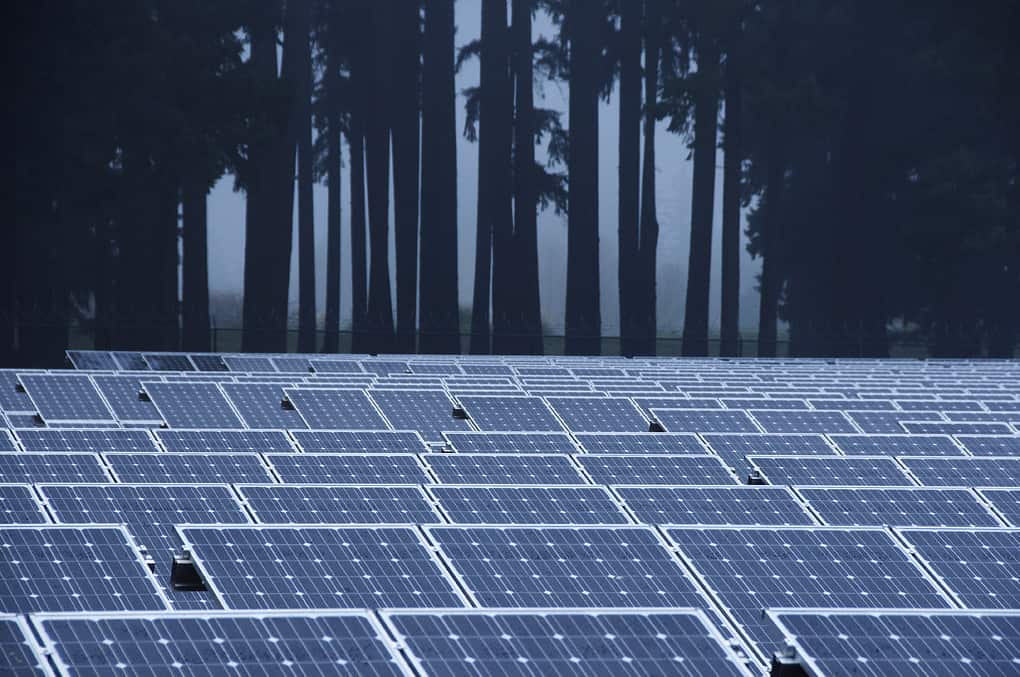Duke Energy’s Allegiance to Gas Leads to Muddled Statements on Solar Emissions Impacts

A Duke Energy spokesperson last week claimed that the growth of solar energy is increasing nitrous oxide (NOx) emissions in North Carolina, and that more solar could even “reverse” a trend of reduced carbon emissions if added to the grid.
Duke spokesperson Kim Crawford’s allegation came as Duke seeks modifications to the air quality permit for its gas-powered Rockingham County Combustion Turbine Facility from the NC Department of Environmental Quality (DEQ). Such “peaker plants” only operate when demand is highest, and can be used in concert with intermittent resources like solar, ramping up and down in response to solar’s variable output. The utility applied in March to more than double the number of hours per year the gas plants could operate. Duke is proposing similar changes for three other facilities.
Conservative media and serial deniers of climate science seized on Crawford’s comments. The North State Journal, a Raleigh-based conservative outlet, quoted Crawford alongside the Heartland Institute’s Steve Goreham, the Institute for Energy Research’s Dan Kish, and Donald van der Vaart, who is former Secretary of the NC DEQ and energy advisor to past Republican Governor Pat McCrory.
On its face, Duke’s claims that solar could increase overall emissions are patently false. A study by the National Renewable Energy Laboratory found that cycling gas generation to accommodate the addition of solar and wind to the grid still results in both NOx and CO2 emissions reductions. Duke attempted this week to walk back the erroneous claims in a blog post, writing “[T]o say solar is causing more air pollution? That may be some faulty logic.”
“If someone buys a Tesla but keeps their Lexus idling in the garage ‘just in case,’ then emissions would indeed be higher than necessary,” said Bryan Jacob, Solar Program Director at Southern Alliance for Clean Energy, further illustrating the farce of Duke’s original misrepresentation.
Behind solar myths, Duke gas expansion looms
Duke’s original claims, and subsequent retraction of them, raises the question of why the company’s public statements on alleged solar emissions impacts have been so confused. The utility’s deep investment in gas may offer a clue: Duke may feel compelled to justify its reliance on fossil fuel infrastructure, or even to tarnish renewable alternatives. Duke has signaled its intention to build over 9,500 MW of gas capacity in the Carolinas alone by 2033, nearly three times its planned solar capacity additions on that same timeline. It is a partner in the bedeviled $7.5 billion Atlantic Coast Pipeline, which would transport gas from West Virginia to Virginia and North Carolina, and possibly further south.
Duke’s greenwashing of natural gas, on display in its blog response, is consistent with coordinated industry messaging. In a 2016 internal memo, the Edison Electric Institute – the trade association representing investor-owned electric utilities – outlined a strategy to “articulate and educate stakeholders that natural gas plants (or sunshine peakers) go hand-in-hand with renewable energy” (emphasis added).
In its DEQ filings seeking approval to further pollute, Duke raises a limited set of alternatives to increasing use of its peaker plants, such as curtailing solar or nuclear output. Grid experts say those aren’t the only options.
“It’s all a business model issue…We saw this with Colorado utilities claiming they’d need natural gas plants to integrate wind. But no one talks about that anymore because they figured out how to run their system with renewables,” said Ric O’Connell, Executive Director of Gridlab, a group that provides technical analysis in support of a low-carbon electrical system. “Other utilities have had no problems integrating large amounts of solar. What’s Duke’s issue?”
Duke’s DEQ filings even present storage as a viable solution to burning more gas – but admit it has barely built any; the utility has deployed 15 MW of storage to date. Recent North Carolina Sustainable Energy Association testimony to the state utility commission, borrowing from a North Carolina State University study, demonstrates how storage significantly reduces the need for gas-powered ramping.
The Southeast lacks an independent grid operator, clearing the way for utility monopolies like Duke to run their gas-burning plants as long as that is profitable. California, to which North Carolina is frequently compared as the state with the second-most solar, instead uses an Independent System Operator to address grid needs in real time – dispatching capacity hourly, or with even greater frequency. “In California, the older plants go out of business because they cost too much, and they aren’t dispatched because they aren’t flexible enough,” Michael Wara, Director of the Climate and Energy Policy Program at Stanford University’s Woods Institute for the Environment, told E&E News.
Meanwhile, Duke’s dedication to gas expansion only exacerbates the current grid deficiencies that lead to ramping, at the expense of investing in a modernized energy system. An E3 study commissioned by FirstSolar and the Tampa Electric Company showed that at higher penetration, flexible solar resources can supplant the function of gas peaker plants – all at lower emissions and lower cost.



